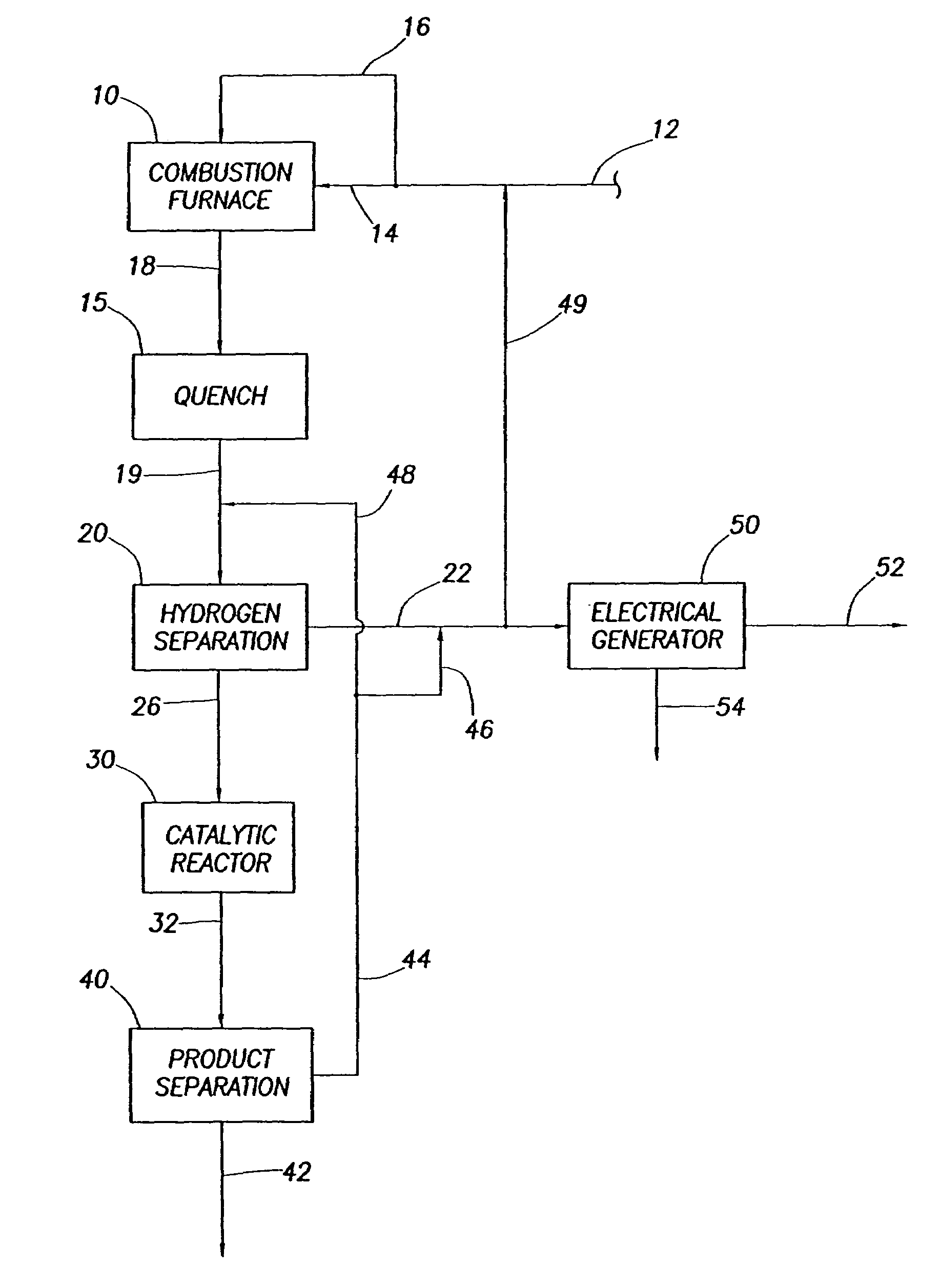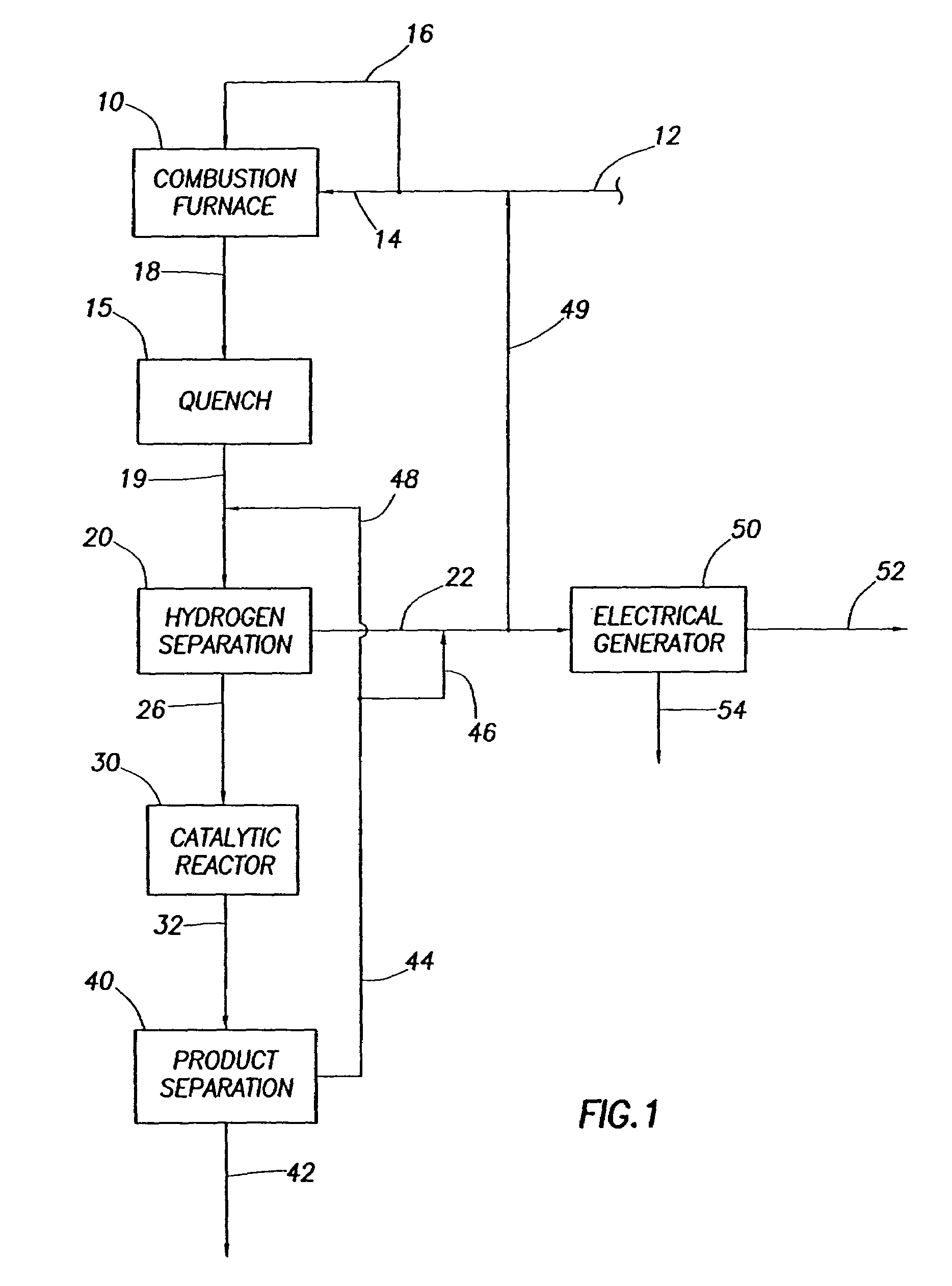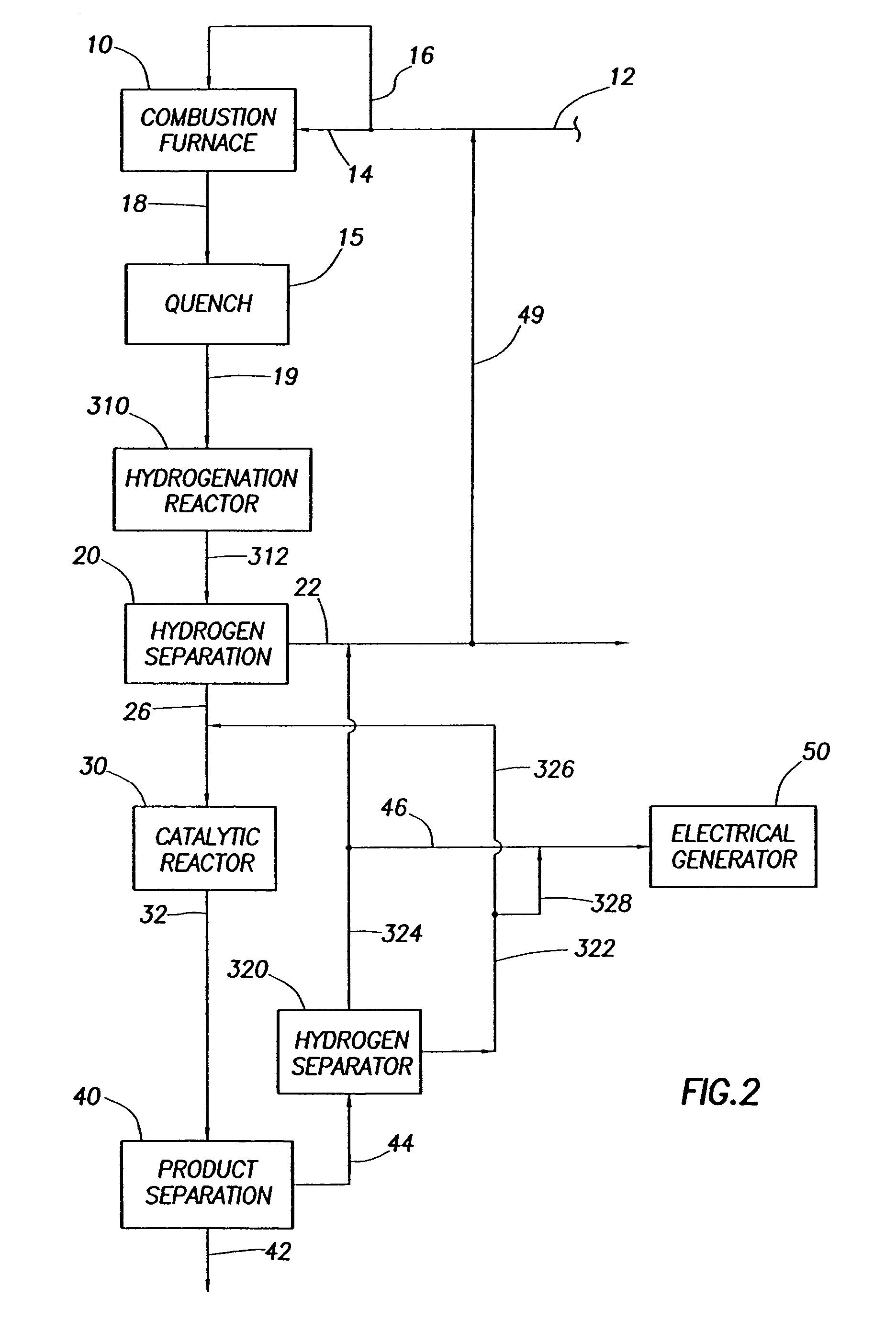Method for converting natural gas to olefins
a technology of natural gas and olefins, which is applied in the direction of hydrocarbon preparation catalysts, gas-gas reaction processes, oxygen compounds purification/separation, etc., can solve the problems of inability to achieve energy-efficient process for converting natural gas to liquid that can be efficiently transported from remote areas to market areas, and may not be economically justified. , to achieve the effect of raising the temperature of the natural gas stream
- Summary
- Abstract
- Description
- Claims
- Application Information
AI Technical Summary
Problems solved by technology
Method used
Image
Examples
Embodiment Construction
[0015]U.S. Pat. No. 6,130,260 and application Ser. No. 09 / 574,510 filed May 19, 2000, are incorporated by reference herein. FIG. 1 shows one embodiment of the steps for producing a liquid product such as naphtha or gasoline from natural gas in the present invention. In this embodiment, a portion of the natural gas feed is diverted from the feed stream to the burners in the combustion furnace 10, where the diverted natural gas is burned, preferably with oxygen-enriched, air such that NOx production from combustion furnace 10 is decreased. As shown in FIG. 1, inlet gas stream 12 is separated into inlet gas feed stream 14 and inlet gas burn stream 16. Inlet gas feed stream 14 is conveyed to the reaction chamber of combustion furnace 10. Inlet gas burn stream 16 is conveyed to the combustion chamber of combustion furnace 10. Inlet gas feed stream 14 is preferably pre-heated in pre-heaters (not shown) before it is heated to the preferred reaction temperature by heat exchange with the hyd...
PUM
| Property | Measurement | Unit |
|---|---|---|
| pressure | aaaaa | aaaaa |
| pressure | aaaaa | aaaaa |
| temperature | aaaaa | aaaaa |
Abstract
Description
Claims
Application Information
 Login to View More
Login to View More - R&D
- Intellectual Property
- Life Sciences
- Materials
- Tech Scout
- Unparalleled Data Quality
- Higher Quality Content
- 60% Fewer Hallucinations
Browse by: Latest US Patents, China's latest patents, Technical Efficacy Thesaurus, Application Domain, Technology Topic, Popular Technical Reports.
© 2025 PatSnap. All rights reserved.Legal|Privacy policy|Modern Slavery Act Transparency Statement|Sitemap|About US| Contact US: help@patsnap.com



